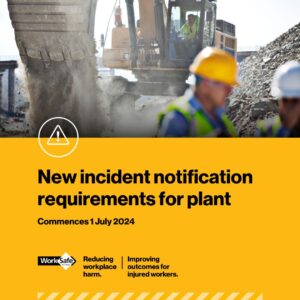CoR Compliance and Safety Management Systems; A brief history
Around 2 years ago, the National Heavy Vehicle Regulator (NHVR) began advising the heavy vehicle transport industry that changes to Chain of Responsibility were coming. The Heavy Vehicle National Law was to be reformed to include positive safety duties and be more closely aligned to Work Health and Safety Laws. The changes were to share responsibility for heavy vehicle safety to all parties in the supply chain who could influence the safety of the vehicle, the load and the driver.
Originally, this was scheduled to happen from 1 July 2018, but it was pushed back to 1 October 2018. One year before the changes were proposed, from mid-2017, the National Heavy Vehicle Regulator began promoting the change through their website, newsletter and information sessions in each State. They produced a number of videos, booklets and flyers to educate stakeholders about the changes and how to prepare.
The focus of the NHVR at this point was around Safety Management Systems. Their solution to improving heavy vehicle safety was for transport businesses to implement a safety management system. This would involve systematic identification and control of risk and having documentation – policies and procedures describing how the system worked.
Do Safety Management System’s Stop Accidents?
Safety Management Systems originate from the world of Occupational Health and Safety. They were seen as the answer to improving worker safety from the mid-1990’s when WorkSafe introduced a Safety Management System framework called ‘Safety MAP’ (Safety Management Achievement Program). SafetyMAP provided a framework to create a system for managing safety, from policy and planning, allocating resources, training, identifying and managing safety hazards, incident reporting and overall management reporting and review. From this, the Australian Standard for Safety Management Systems (AS4801:2001) was developed – 18 years ago. A famous case of failure of the Safety Management System was in 1998 when the Esso Longford gas plant exploded, killing 2 workers, injuring 8 and leaving Melbourne without gas supplies for 2 weeks.
The safety profession has since moved on from Safety Management Systems, as history showed us, that they can end up being books gathering dust on the shelf and not the way the business manages safety at all. So why would the NHVR espouse that a Safety Management System was the best way to comply with the new laws?
We still don’t know. But we do know, the reforms were introduced in October 2018 and by December 2018 a full review of the Heavy Vehicle National Law was announced. That says to us, this law is not achieving the right outcome.
Safety Management Systems and CoR Compliance
We work in transport businesses and only the large ones have specialist compliance people. To create and implement a Safety Management System requires technical safety expertise and people who are good at writing procedures. Then it needs everyone trained and on board for the implementation and ongoing use, measurement and success of the system. We don’t know any small to medium transport businesses who have that luxury.
We’ve also worked with business when investigated for multiple fatality road accidents, when the Heavy Vehicle Police Investigators come knocking on the door looking for hard evidence of compliance with the law.
So what’s more important? An effective way of managing transport activity risks, that complies with the law, or a Safety Management System that is not required by those laws? Nowhere in the Heavy Vehicle National Law are safety management systems mentioned.
Managing CoR Risks Systematically
What if you can have a systematic approach to managing CoR that address the requirements of the Heavy Vehicle National Law and will demonstrate the evidence you need to help avoid a prosecution in the event of a visit by the Police, Road Authority or Safety Regulator? That’s where CoR Comply comes in. It’s all the policies, procedures and forms you need for CoR compliance, that when implemented, provide you with a system for managing CoR risks and compliance with the HVNL. It needs to be implemented and actively managed in your business. But the hard work has been done for you.
CoR Comply is specifically designed to suit the operations and resources of small and medium transport businesses
You won’t need to be concerned when are sent a CoR questionnaire from one of your clients either, or if they decide to come and audit you. You will have everything you need.
Confused About What You Need To Do?
There continues to be a lot of misinformation about what you need to do and some consultants are misleading in suggesting that a CoR Management Plan is needed or you need to be monitoring and managing other businesses in your supply chain. The fact is, everyone is responsible for their own compliance activities and the more you interfere in others, the more liability you accept if something goes wrong. The NHVR have even put out the word that some of the CoR third party audits within the supply chain go too far and over-step the intent of the laws.
That said, there are many global companies using road transport suppliers that demand participation in invasive audits. Rest assured, CoR Comply will also tick this box for you.
In fact, CoR Comply is the preferred system for a large FMCG distributor throughout their Australian operations.
Now You Know What To Do
CoR Comply was created as a simple and cost effective tool for transport operators specifically to comply with the Chain of Responsibility reforms introduced to the Heavy Vehicle National Law in October 2018. It is a set of documents, policies, procedures and forms that you can purchase online, download immediately, tailor to your business and implement. There are 5 packages and each comes with a step-by-step implementation plan that you assign responsibilities and tick off when each step is completed.
It was developed by safety experts with hands-on transport industry experience and is built around what works for small and medium sized transport businesses. It’s great for larger businesses who want peace of mind their sub-contractors are compliant and also makes for easy auditing if all your subbies are using one system. You don’t need go ferreting through all through all sorts of documents every time and then find they miss the mark anyway.
We offer 1 month free implementation support and ongoing support is also available.






